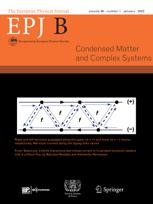Assessing the effect of hydraulic fracturing on microearthquakes
New research examines mining sites with hydraulic fracturing comparing it to those without to determine the practice’s effect on seismic hazards.
New York | Heidelberg, 15 August 2022
 The analysis of low-intensity human-caused microearthquakes, including their magnitude and frequency, has become an important factor in mining. This is a consideration not only for the safety of mining staff, but also for extraction rates and mine stability that can have major impacts on business performance. Increasingly, the practice of hydraulic fracturing is used to precondition mines and diminish the magnitude of induced tremors as well as reduce the number of rock fragments extracted.
The analysis of low-intensity human-caused microearthquakes, including their magnitude and frequency, has become an important factor in mining. This is a consideration not only for the safety of mining staff, but also for extraction rates and mine stability that can have major impacts on business performance. Increasingly, the practice of hydraulic fracturing is used to precondition mines and diminish the magnitude of induced tremors as well as reduce the number of rock fragments extracted.
A new paper published in EPJ B assesses the impact of hydraulic fracturing on seismic hazards like microearthquakes, an important issue for the safety of workers and the continuation of mining operations. The paper is authored by Erick de la Barra, Pedro Vega-Jorquera and Héctor Torres from the University of La Serena, Chile, alongside Sérgio Luiz E. F. da Silva from Politecnico di Torino, Department of Applied Science and Technology, Turin, Italy.
Hydraulic fracturing involves pumping large quantities of fluids into a wellbore at high pressures. This has the effect of enlarging fractures in the target rock formation. This results in an increase in the yield of oil or gas from rocks - especially from low-permeability rocks like tight sandstone, shale and occasionally coal beds.
The authors attempt to quantify the benefits of preconditioning with hydraulic fracturing by integrating previous investigative models to create a more realistic approximation of the seismic ruptures.
This model was applied to a mine in the O’Higgins Region of Chile to assess induced seismic activity due to the effect of hydraulic fracturing. The team also considered both the magnitude of microearthquakes and the intervening time between events.
This was done by considering 15,436 microearthquakes recorded between 2003 and 2008 in three sections of the mine. These were then compared on the basis of whether the section had been preconditioned with hydraulic fracturing or not.
The results seemed to imply that hydraulic fracturing decreases the magnitude and the microearthquakes. The model worked on by the team could also be utilised to predict seismic activity, and to understand so-called marsquakes occurring on the Red Planet.
“In reference to the next step in this investigation, our interest is to work with the problem when self-similarity is broken,” Vega-Jorquera says. “Thus, considering the problem of multisources and relating them to multimodal distributions, this would imply evaluating possible modifications of the seismic hazard via hydraulic fracturing.”
Reference: de la Barra, E., Vega-Jorquera, P., da Silva, S.L.E.F. et al. Hydraulic fracturing assessment on seismic hazard by Tsallis statistics. Eur. Phys. J. B 95:92 (2022). https://doi.org/10.1140/epjb/s10051-022-00361-6
Further Information
For more information visit: www.epj.org
Services for Journalists
The full-text article is available here.
Contact
Sabine Lehr | Springer | Physics Editorial Department
tel +49-6221-487-8336 | sabine.lehr@springer.com